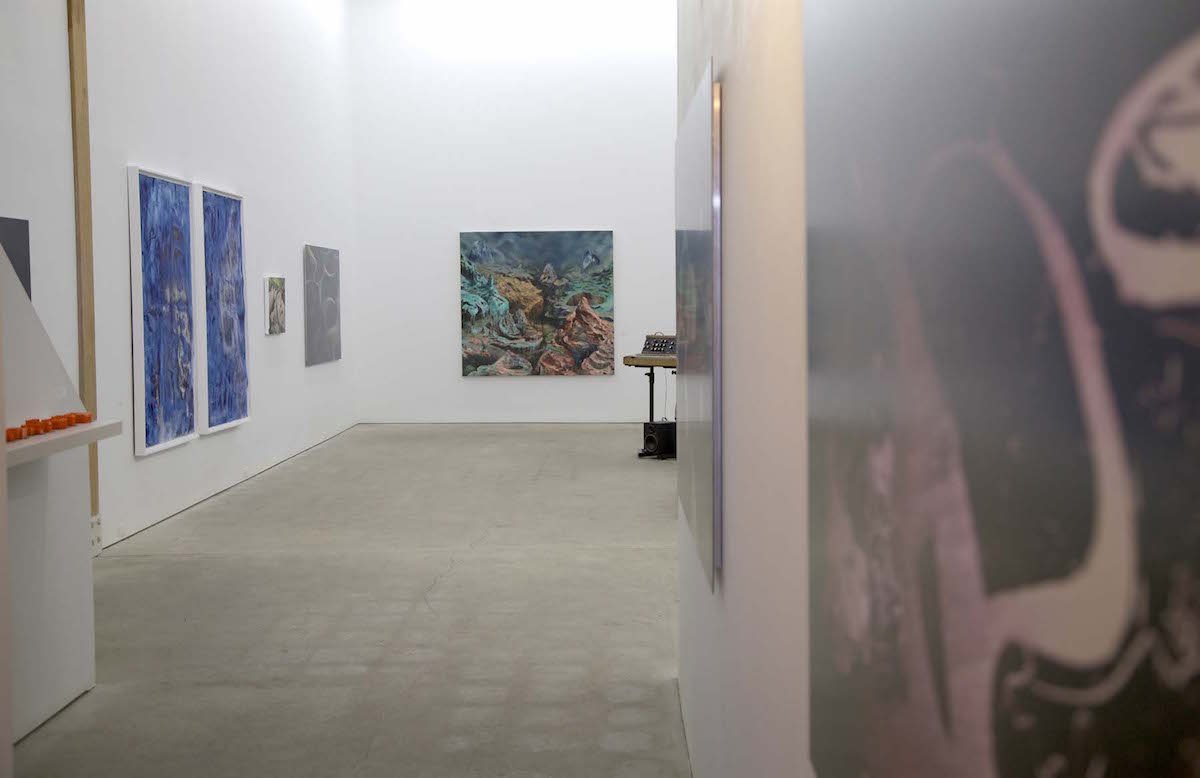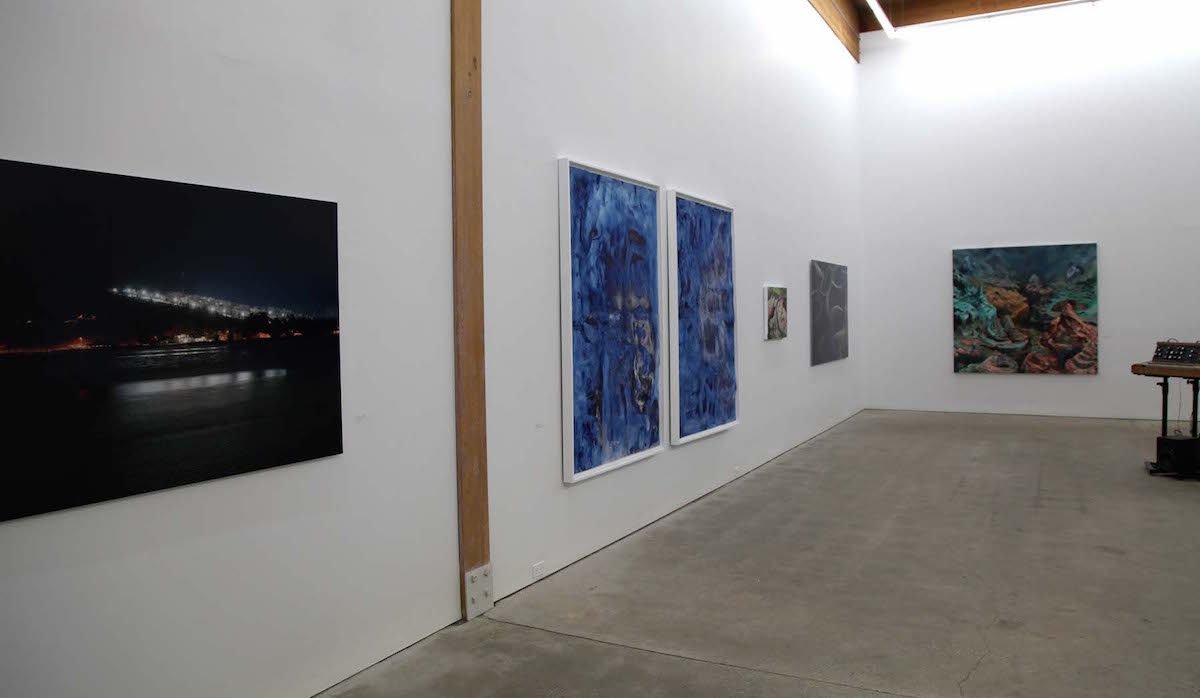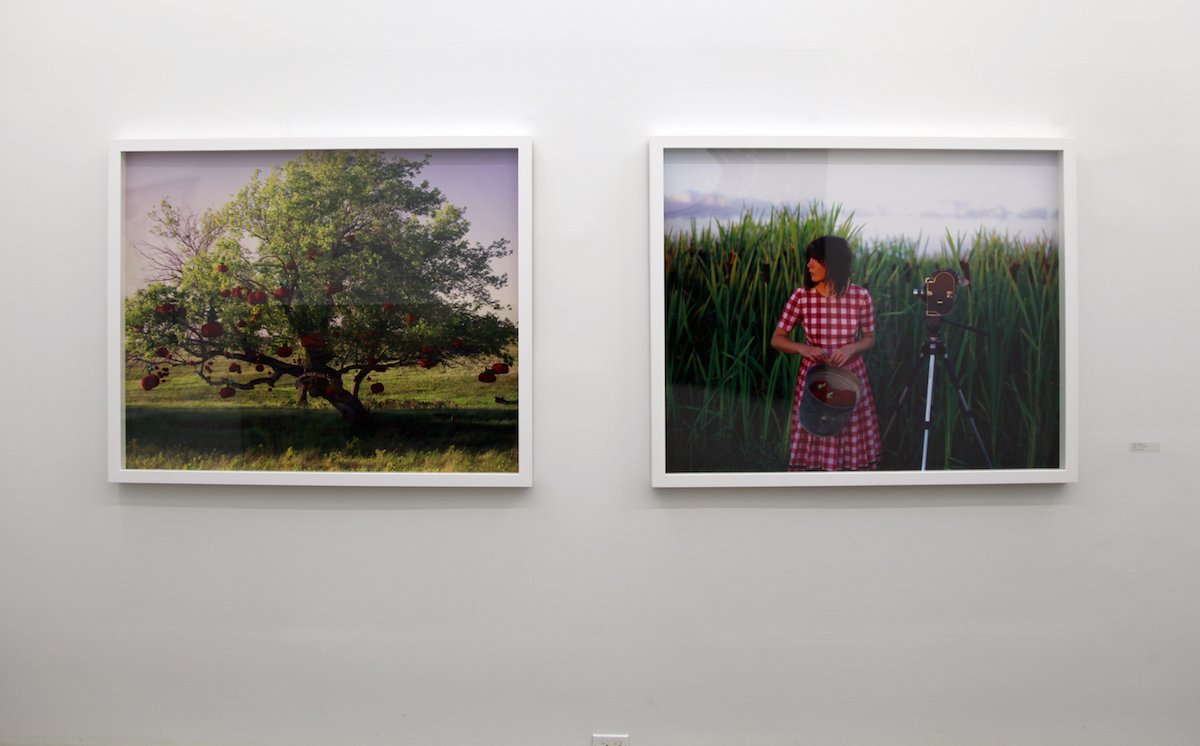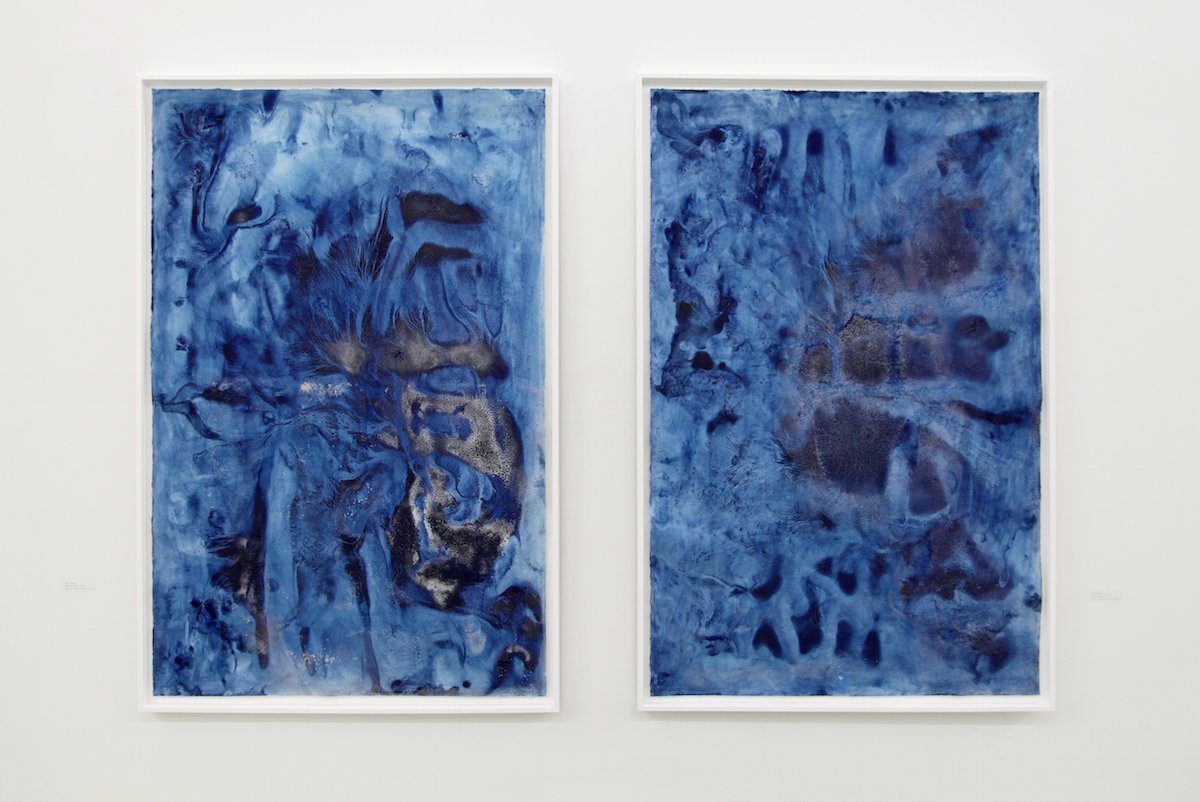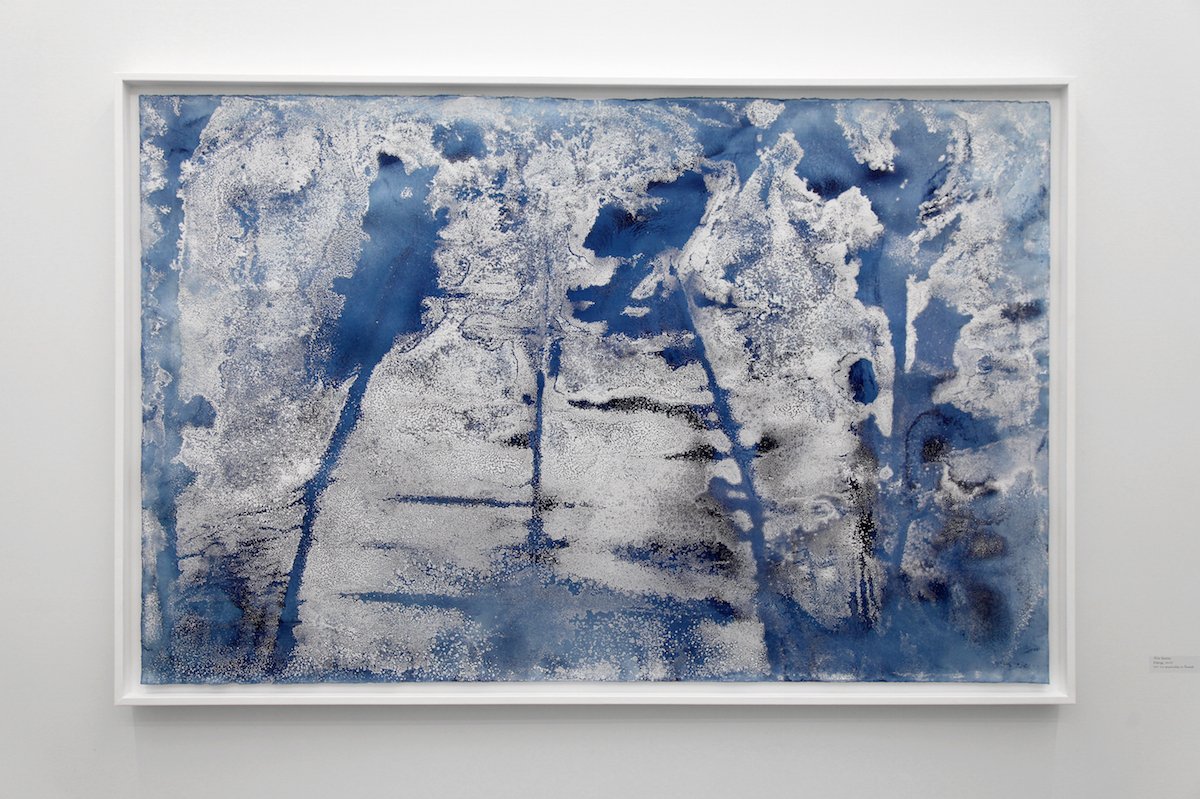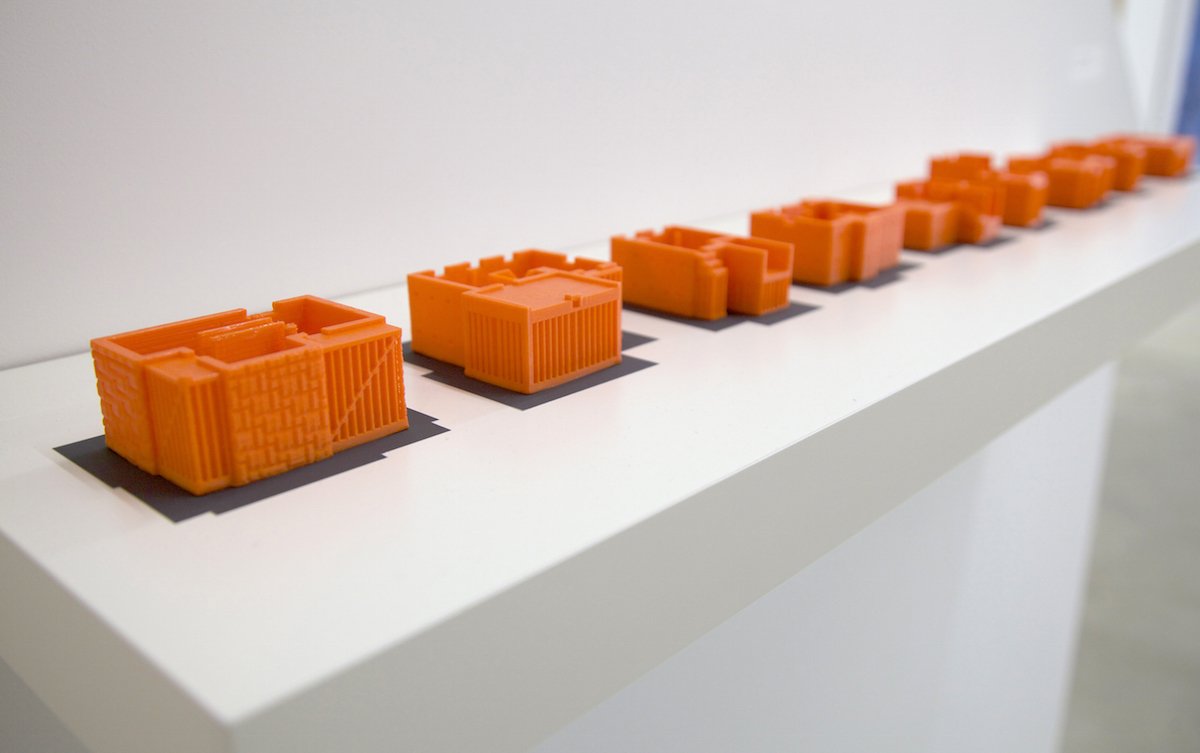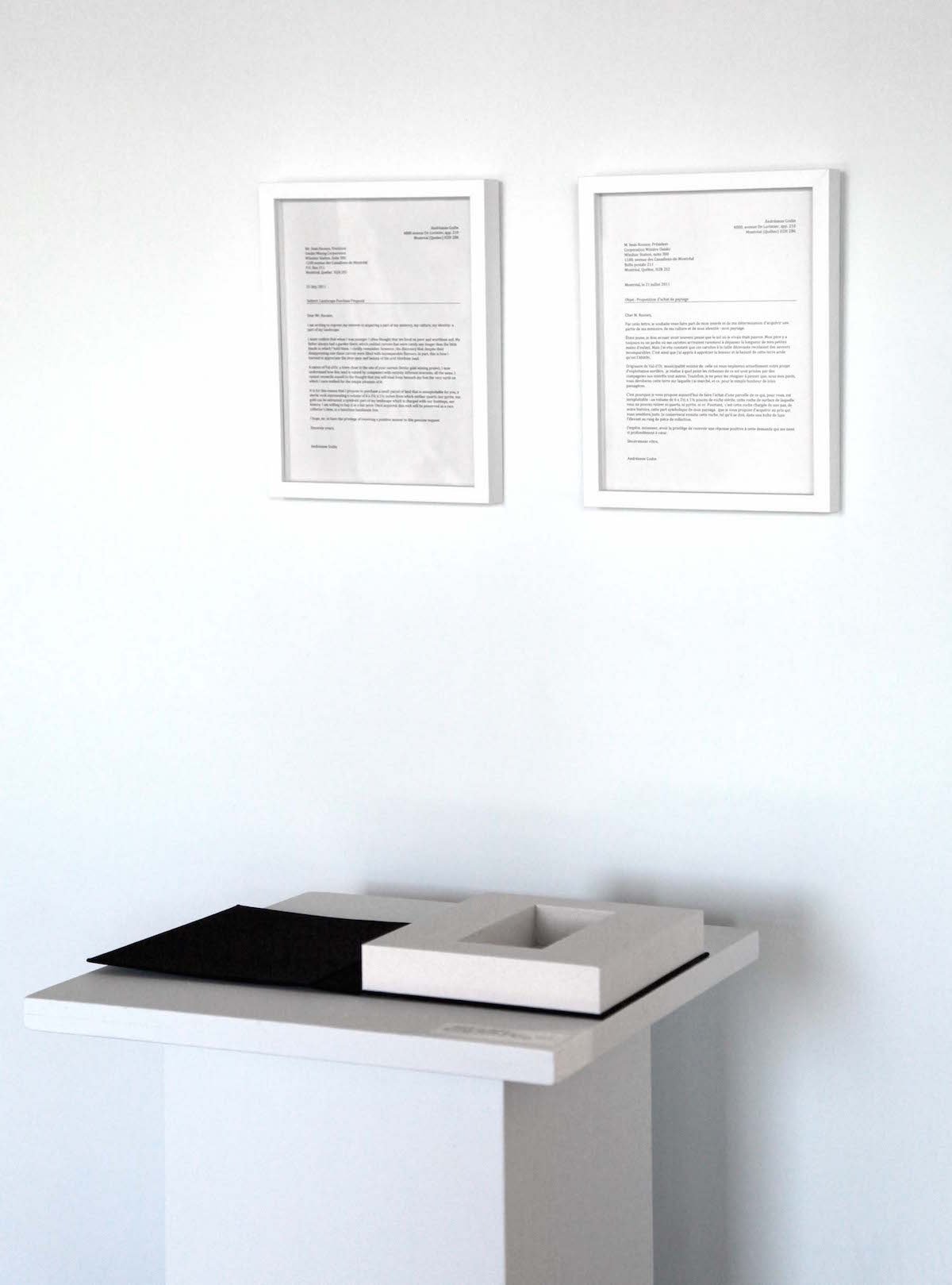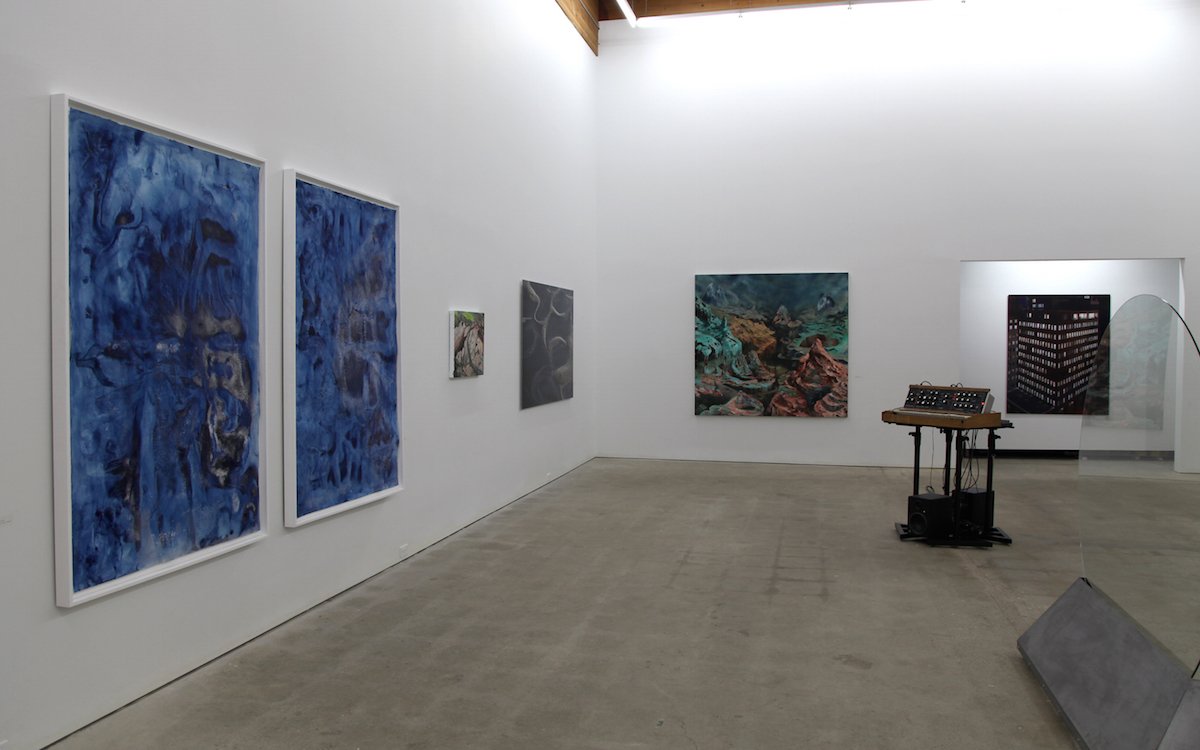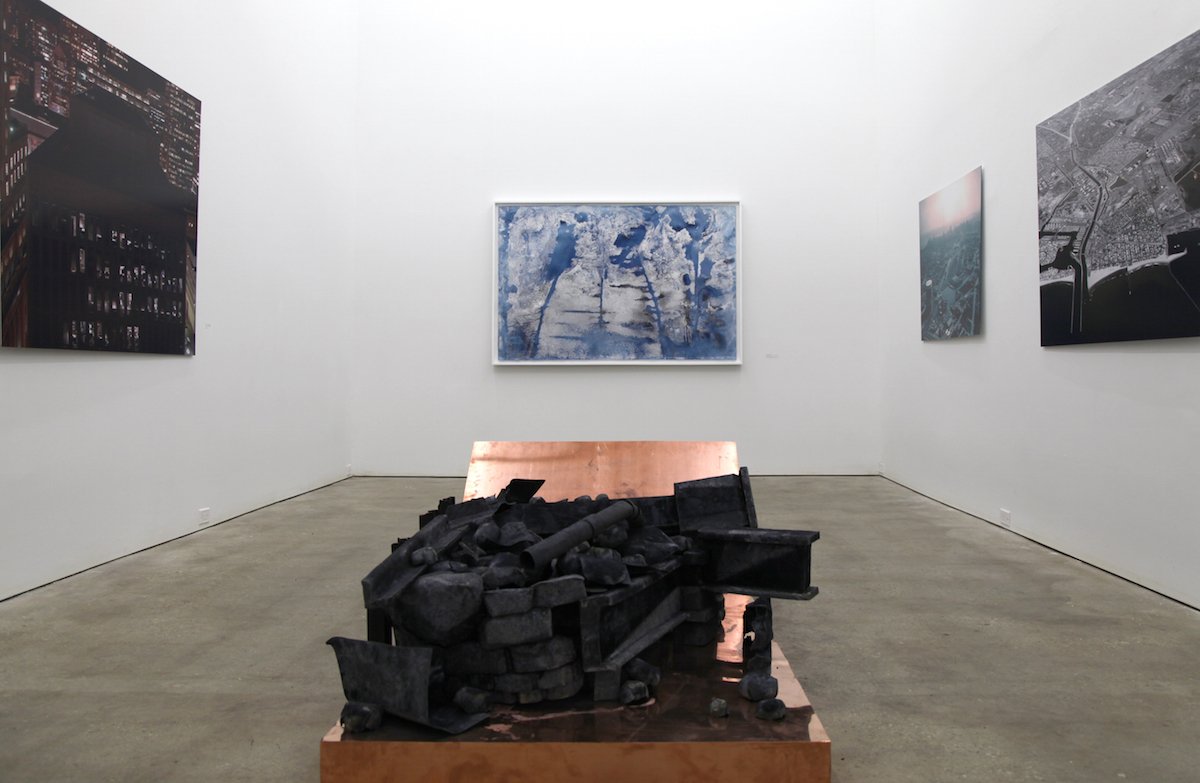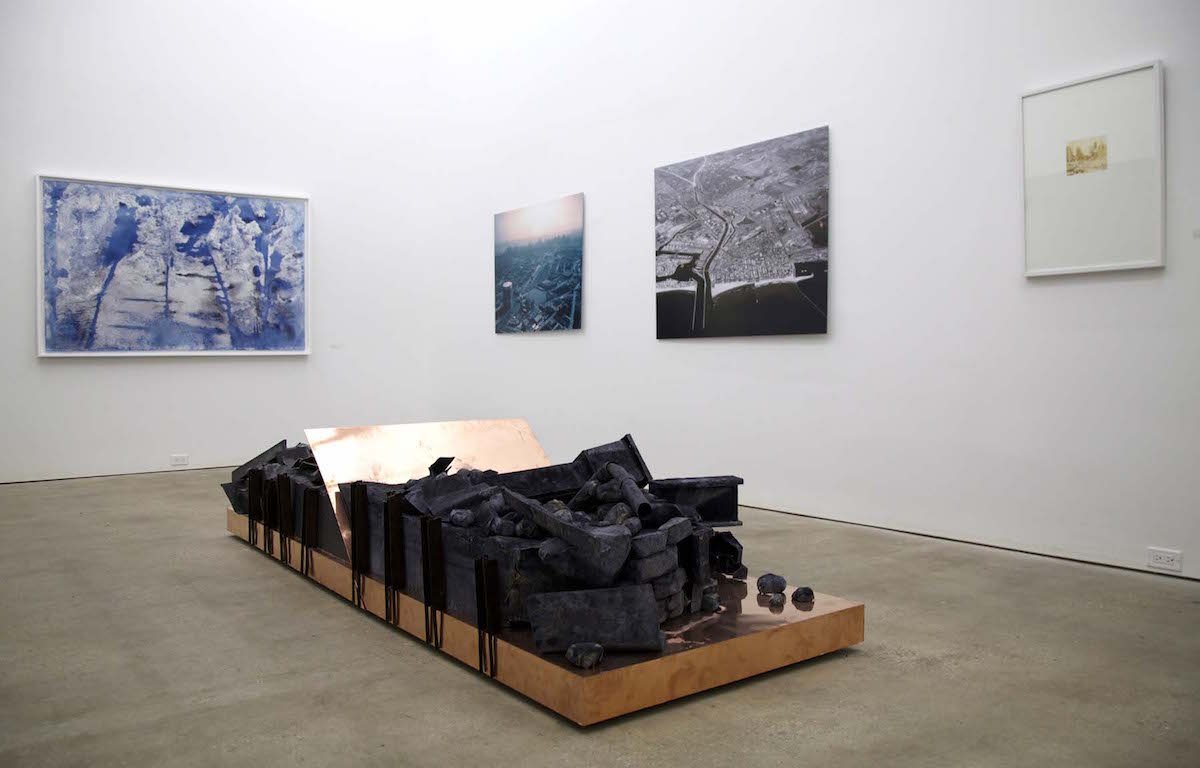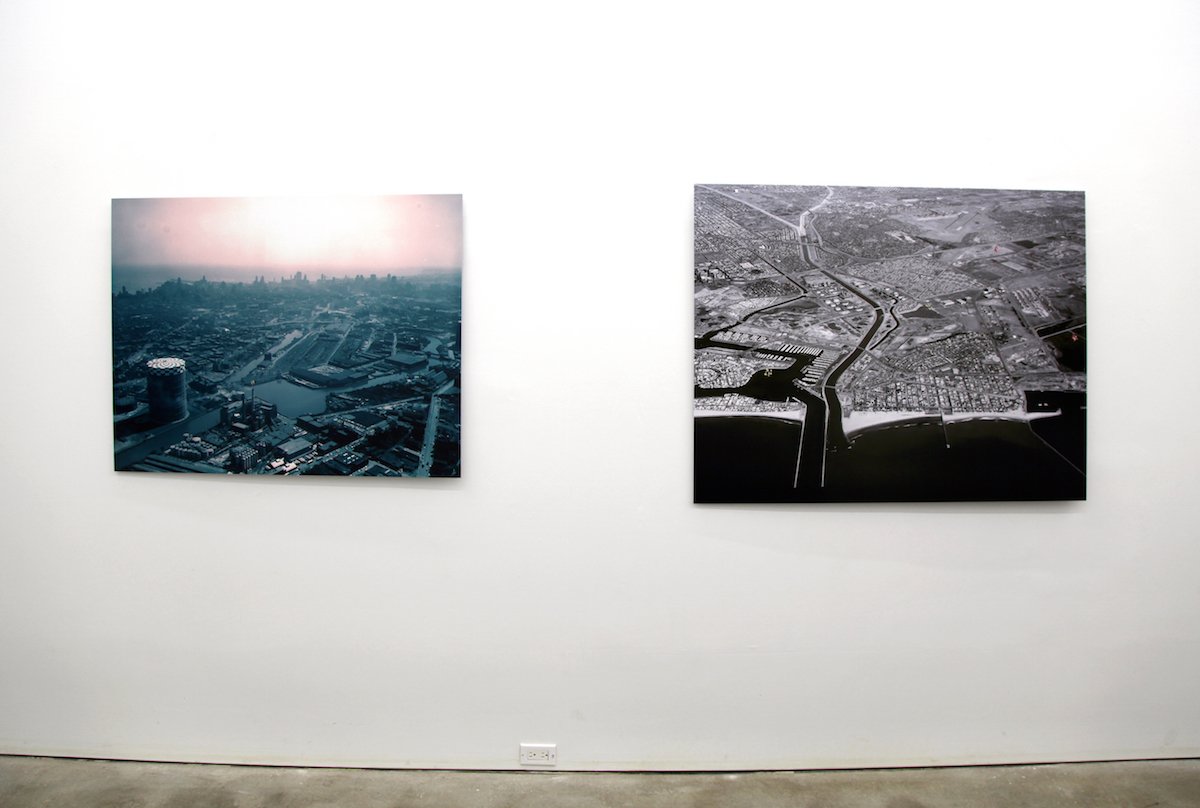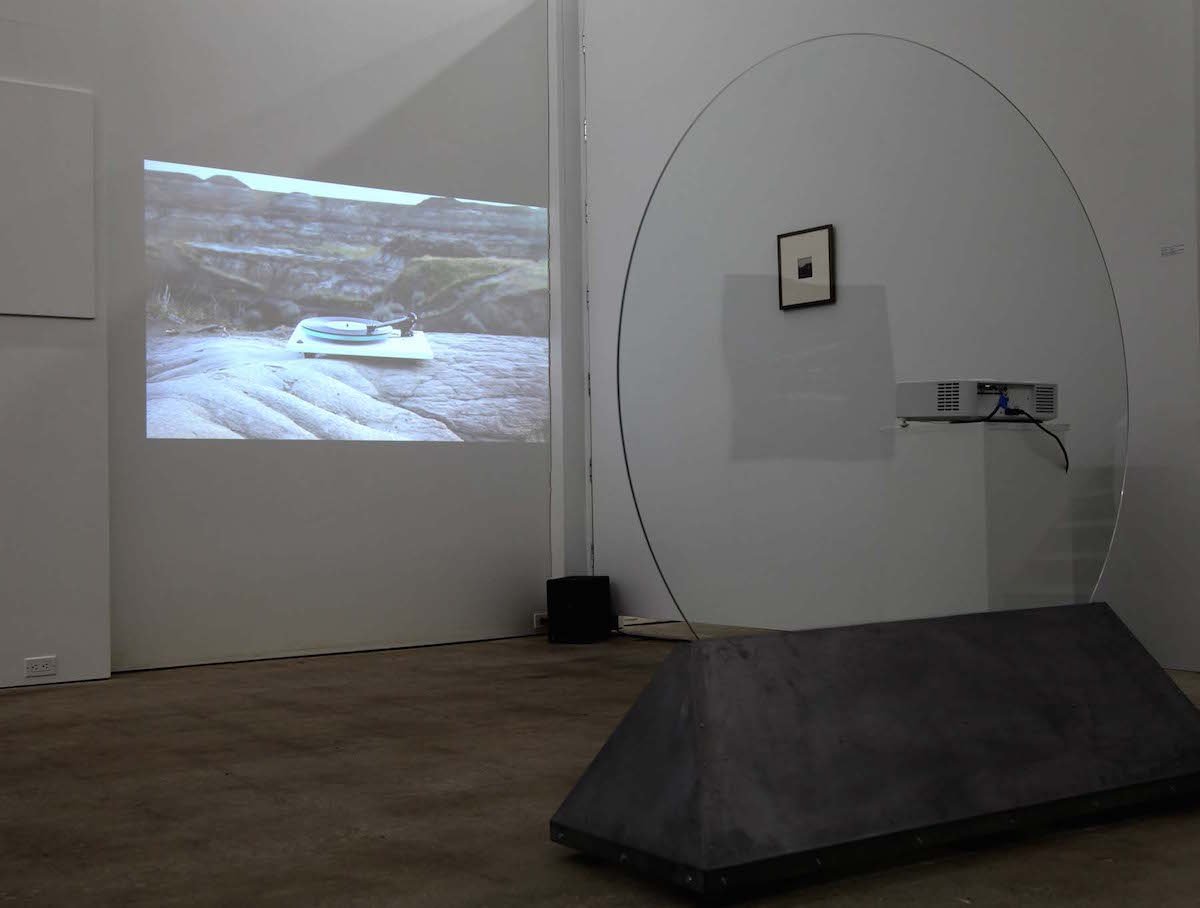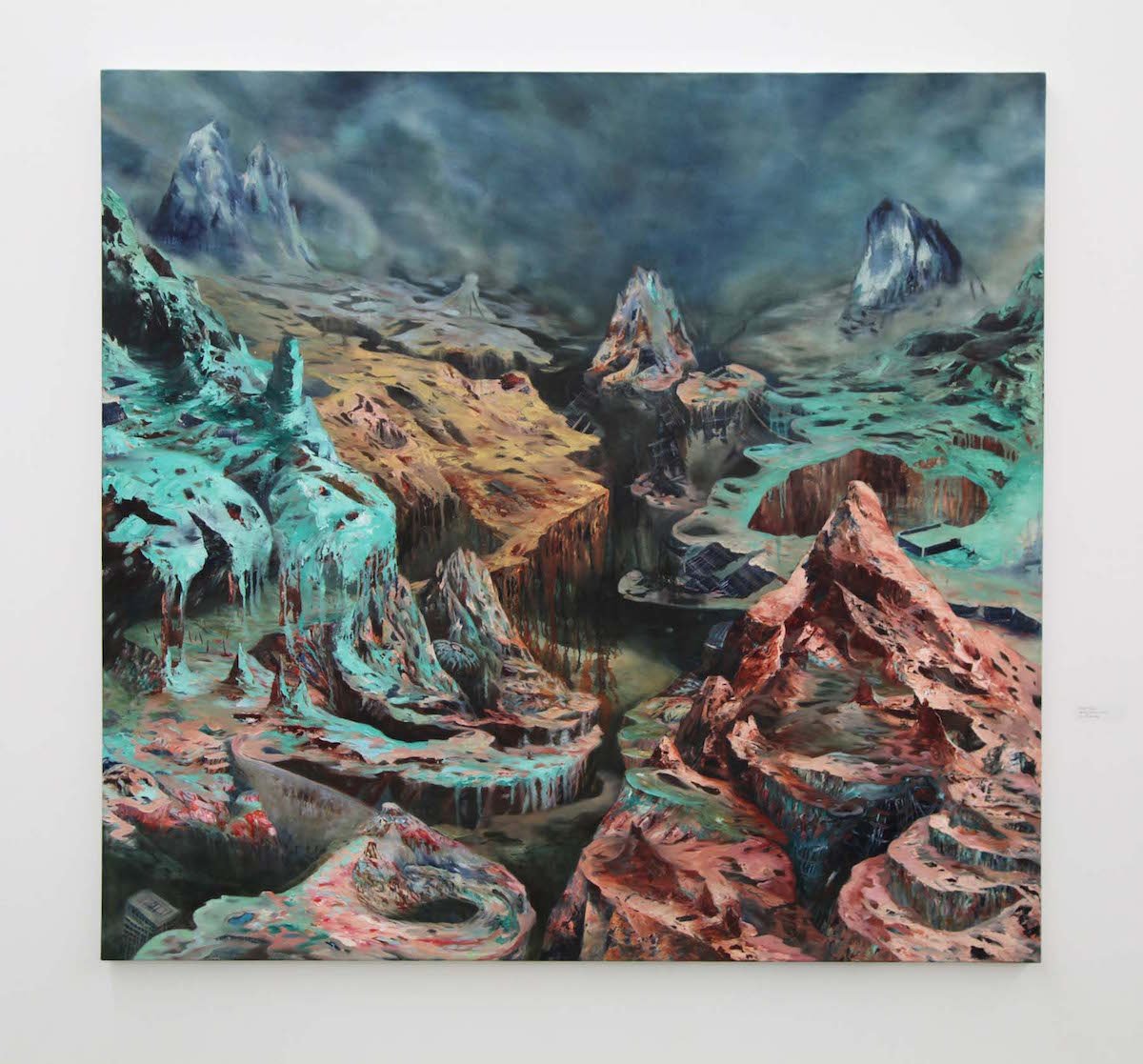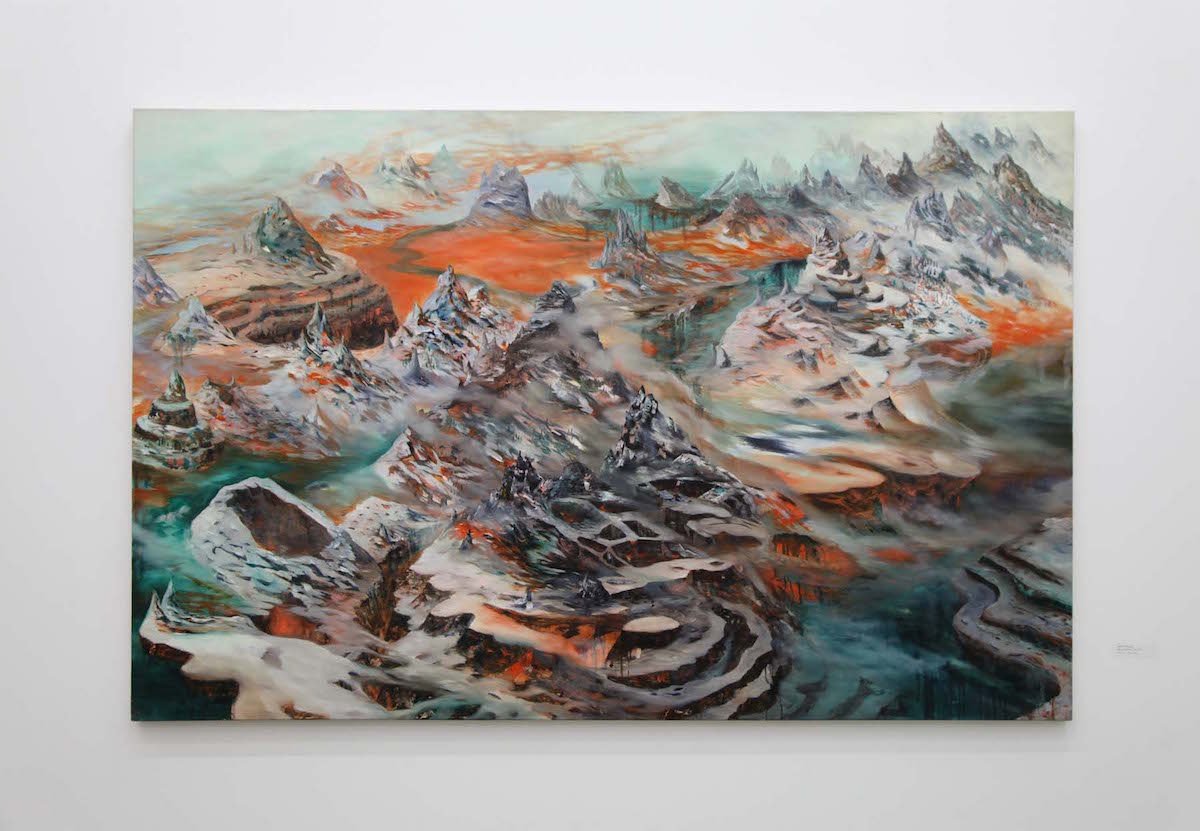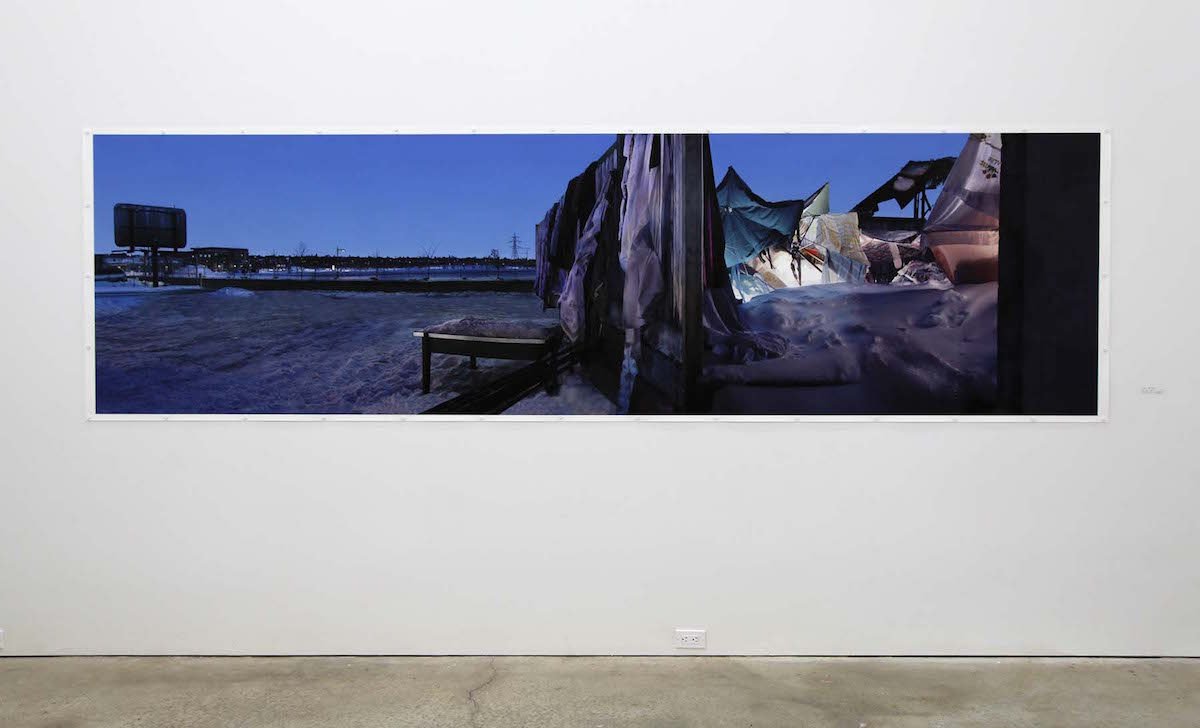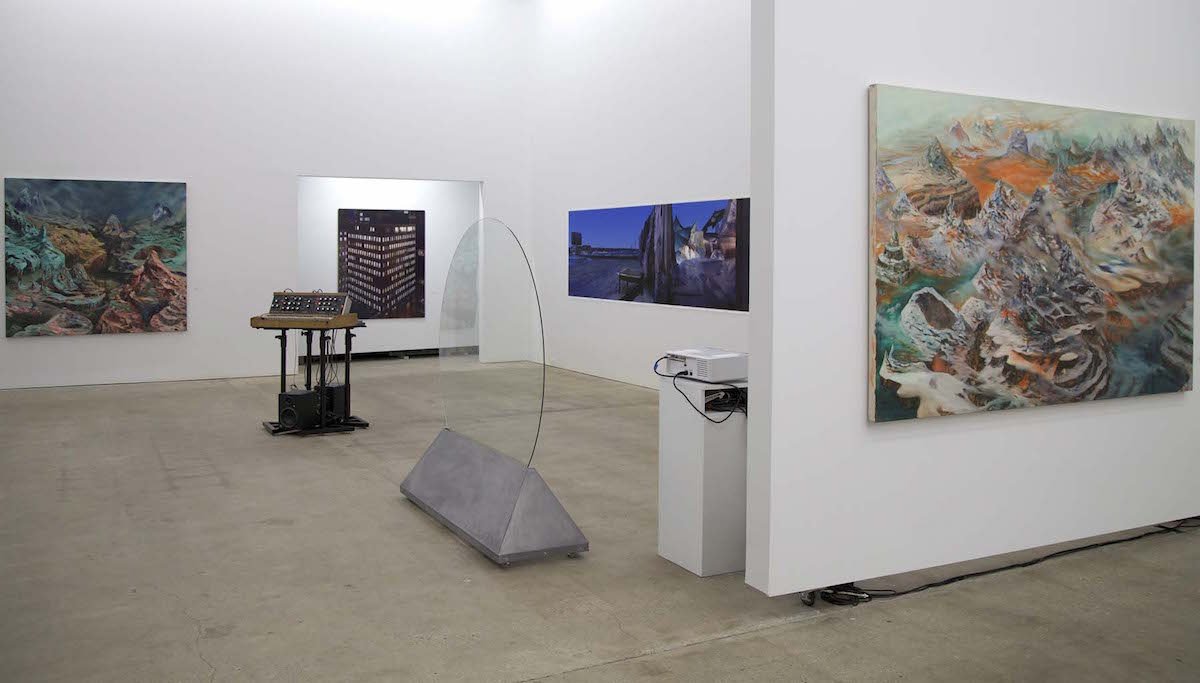
… Landscape
February 13 – March 15, 2014Featuring: Nika Blasser, Mackenzie Browning, Andreanne Godin, Gary James Joynes,
Thomas Kneubuhler, Colin Lyons, Mitch Mitchell, Jay Mosher & Rory Middleton,
Matt Shane, and Laura St. Pierre
Post-apocalyptic, theoretical, fictional, psychologic, economic, post-post-apocalyptic, mediated, urban, suburban, transitional, historical, alien, ANYTHING but another idealized historical, traditional … Landscape.
Canadian art history is full of the idealized landscape – from Krieghoff to Thompson there has been an infatuation with the landscape as grand character in the Canadian story. Edmonton is full of landscape related art at every turn – and this is to many what art is – landscape paintings decoratively sitting within space reminding us of the idyllic and so very Canadian … landscape. Even in a time of rapid industrialization and urbanization, the Group of Seven and their peers sought out the natural and wild of central Canada as the true muse for their works. On the west coast Emily Carr similarly canonized the west coast rain forest, though she also included the presence of Canada’s original people as an important facet of that world.
Around the world, artists looked at their surroundings to inform their work and through the 20th century changes in societies would be reflected in the art of the day. Landscape in Canada was used as a trope to catch the attention of settlers from Europe, to inspire Canadian troops, to encourage postwar populations to migrate or travel, and to inspire tourism from all over the world throughout the 20th century. The great Canadian landscape in art has become such a cliche that I feel the importance of the discussion about that landscape has been lost. It would be easy, given the ubiquity of the familiar landscape, to deny the validity of landscapes as a topic for artists working in contemporary fields. … Landscape is an exhibition inspired by those artists working with our landscape today, the contemporary landscape, altered by development and growth, mediated by planes of glass and soundtracks, hemmed in within cities and suburbs. This exhibition has been in mind for years, inspired by the work of well known artists like Edward Burtynsky and Peter von Tiesenhausen who push the boundaries of the expected in working with landscape.
What is landscape today? Few of us experience a pure, wild Canada through our lifetimes. We are apt to play witness to trees, mountains and rivers only in passing, and through the window of a car with music playing through earbuds, movie and youtube streamed to our nearest mobile device. The wilderness we rush through is altered by our roads, our power grid, our cell towers and our relentless tools for exploiting the lands resources. Canadian green spaces are amazing and wonderful but are rarely daily fixtures in our lives – instead we travel from suburb to suburb, sometimes congregating in the deep urbanity of our cities. Today’s artists working creatively with our surroundings reflect the reality of contemporary landscape – asphalt and concrete more than granite shield – and look to the physical and economic forces that have built our world. They view the transitional spaces between habited and uninhabited as foil for their thoughts and use both traditional and novel media to communicate their ideas.
… Landscape showcases artists working outside the cliches of traditional views of the land, artists from across Canada who are asking questions about what our relationship is to the land. These are artists communicating complex and important ideas through visual art in all media – they are reflecting our time and place back to us in real time.
Artists
The lands around us are the product of millions of years of physical forces: wind, water, ice, time. The deaths of species, the carving of rivers and sprouting of mountain ranges, the slow movement of both plates of ice and plates of the earth bring us the land on which we live. Gary James Joynes and Nika Blasser are both Edmonton artists reflecting the formation of lands and seas through their art practices by using similar raw physical forces. Joynes uses the physical force of sound waves blasted through grains of sand to draw and shape the particulate. Mimicking the slow vibration/periodicity of our planet rotating the sun the remarkably geologic forms arising from his experiments can shift our perspective from the scale of sand particles to the movement of the oceans and the coastlines around the world. This is a view of our changing environments through the actions of physics, and reflected by the mirror of art.
Movements of molecules, dye and salt, through water helps Nika Blasser to find natural forms in her work. The changing concentrations of solutions, the evaporation of water molecules leaving salt to crystallize on the heavy paper substrate all speak to concerns in our current world. Salinization of the planet, changing water levels inland and on sea coasts lead to changing environments for all living things. The natural but abstract forms in her work start to take on additional importance when we reflect on these forces within our own lives.
Thomas Kneubuhler is a Swiss born Montreal based photographer who has taken to nighttime vistas both within our cities and on its margins. Kneubuhler uses long exposure times to capture amazing subtlety in the details of forests surrounding ski hills in rural Quebec. Lit for night skiing, and buzzing with activity we witness not only the intensity of the night sky awash with bright white lights, but the fine tracks of human and animal activity that continue in spite of the electrical onslaught. His monolithic office buildings, nearly full lighted speak of our 24 hour lifestyle, as well as our reliance on finite resources to power our computers and our machinery. Kneubuhler has more recently pointed his lens at the resources pumping power and finances in Quebec’s economy – examining hydroelectric projects for their impact on the formerly nomadic Inuit and Cree settled into subdivisions, and the now nomadic workers transplanted from job site to job site before being redeposited back in the urban centres of the south.
Andreanne Godin was born in rural northern Quebec and has fond memories of the land around her family home. Picking blueberries in the scrub of the rocky Canadian shield and difficult vegetable growing in her Grandfather’s garden of shallow soil sit large in her recollections. Faced with a changing land and a changing family she has reached out to the industries creating such profound change in hopes that they will recognize the sentimental importance of our personal landscapes. Making a heartfelt if somewhat naive request of a multinational company, she recognizes the importance of the treasures contained within the land and of extracting it for the local community. She would simply like a piece of her personal landscape as a souvenir. So far, her request has gone unanswered.
Calgarian Jay Mosher and Glasgwegian Rory Middleton worked collaboratively on a 2010 piece called Talisman, involving Scottish composer Duncan Marquiss. What began as an experiment into film trickery used in Stanley Kubrick’s 2001: A Space Oddysey, became a Badland adventure. We are left with the documents of a journey of a slowly spinning 5 foot circular lens into Alberta’s otherworldly Drumheller region, a film of the spinning glass platter of a Rega vinyl turntable playing an unearthly sound track in the desert, and a tiny polaroid of the lens in that setting. We experience our landscape between here and there, through the windows of a bus or automobile and the lens of our camera. How does the enormity of the land impact us through these mediating layers? Do we experience it at all?
Originally from BC, Matt Shane claims to be based in Montreal. Review of his CV shows, however, that he lives out of a suitcase and travels the world for residencies. He has worked and exhibited in locales as far removed as Dawson City Yukon, Dale Norway, Dubai UAE, Iceland, northern Vermont, Belgium and Holland. Matt mines old geology books and natural history catalogues, the surroundings of his temporary homes and science fiction and his experience as a premiere league tree planter to create new lands and new times. Not clearly futuristic nor historical, there is a tension present in this work placed squarely between the natural and the manufactured. Acidic and toxic colours swirl through familiar forms to leave us in a purely fictional blend of worlds, with a reminder that our worlds are changing around us. What future would we choose? Will it be a choice or is the die cast?
Colin Lyons completed his MFA in printmaking at the University of Alberta before relocating to Kamloops BC. Produced while on residency in San Francisco, Ruin/Rubble (2013) is a large installation combining his interest in history, the degradation of everything over time, and amateur chemistry. Sparked by a found photograph of the ruination of the city after the 1906 earthquake, this installation is a look at turn of last century disaster porn and our fascination with destruction (stormchasers, Detroit City collapse and weather disasters worldwide). Reprinting the photo in a pigment that will progressively destroy the paper it sits on, he then rebuilt a portion of the ruined city out of zin, only to expose it to progressive and accelerated decay through chemical processes. He used these decomposing zinc objects to print exact replicas on paper and reconstruct them from modelling foam and paper. Lyons seem to challenge us in our understanding of what is the real tragedy and what is remnant or experience.
Another former Edmonton resident with a University of Alberta printmaking MFA, Mitch Mitchell has now settled in Montreal to a job at Concordia University. His series of photo-based works The Metropolis Chronicles represent a complex amalgamation of the world as it existed at one time in the past, and the world as it has never existed. Collecting thousands of exquisite 4 x 5 negatives from companies who flew photographic surveys in the 40’s and 50‘s over places important to him, Mitchell is rescuing the products of a dead industry for repurposing today. He pores over hundreds of negatives all shot on the same day and same flight, digitally cuts out areas photographed and stitches them together into a real place that has never existed. He leaves the viewers clues that they are not seeing reality, placing 3D animated objects within the picture that initiate thoughts of alien invaders, surveillance balloons, drone vessels and hydrocarbon pollutants. We may pass by seeing an old aerial photo, or may be drawn into a much deeper narrative about our world today.
Laura St. Pierre is known to some in Edmonton for her work included in the 2013 Alberta Bienniale of Contemporary Art or her RBC Gallery feature show at the AGA several years ago. Laura has very recently relocated with her family to Saskatoon from Grande Prairie, and continues a practice dedicated to ephemerality in landscape and structure. Creating and lighting domestic structures in unusual and often desolate spaced, St. Pierre photographs the structures in their environment before dismantling them – leaving little trace of her activities. The immense photo based prints are reminiscent of historical panoramas done by early travelers into unpopulated areas, yet seem also to involve the contemporary narrative of the marginally housed people in all Canadian communities. Her shelters could be transient homes, faerie lodgings from folklore or perhaps future survival shelters in a world corrupt and irreparable. They are present one minute and gone the next, our only reminder the 4’ x 13’ image of a glowing place of refuge.
Home as safety also describes Mackenzie Browning’s memories and his art practice. His 2013 installation 3D Foundations is an exercise in remembrance and identity through a suburban maquette. The collection of 9 suburban foundations were created and printed on a 3D printer from his memories of a series of homes his parents bought, fixed and flipped as he was growing up. Reminding himself of time spent in their nooks and crannies, his new constructions create the landscape, both psychological and financial, of a childhood all neatly compartmentalized on one small street.
… Landscape is an exhibition of artists working to bring vitality to the hackneyed genre of the Canadian landscape. By using new and old media, revisiting the meaning of landscape and thinking deeply about what land is now, rather than what we wish it was or used to be, these artists are asking questions of themselves and us all. Our role in the land, and our relationship with it has intensified and changed over the past 80 years. The artists presented in … Landscape seem to suggest that our landscape art had best change as well.
